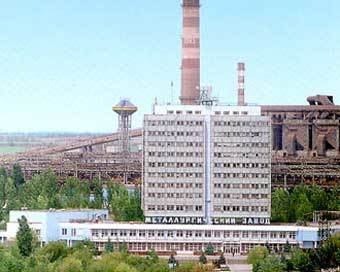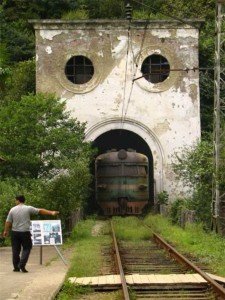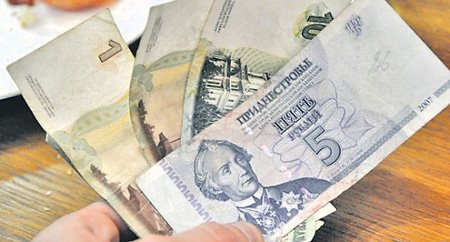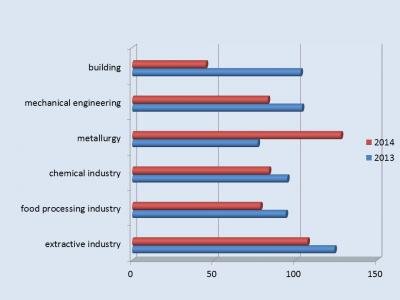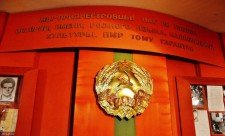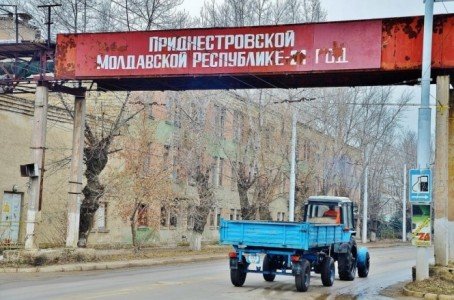 Status of non-recognition brought serious economic problems such as decline in manufacturing output, desertion of agriculturally used areas, drastic reduction of transport connection and external trade, absence of foreign investment to the three republics of the post-soviet space (Abkhazia, Transdniestria and South Ossetia). The very same sad fate is probably waiting for Crimea, which even though became part of Russia but had been doomed to the “special” status because of non-recognition of this action by the global community.
Status of non-recognition brought serious economic problems such as decline in manufacturing output, desertion of agriculturally used areas, drastic reduction of transport connection and external trade, absence of foreign investment to the three republics of the post-soviet space (Abkhazia, Transdniestria and South Ossetia). The very same sad fate is probably waiting for Crimea, which even though became part of Russia but had been doomed to the “special” status because of non-recognition of this action by the global community.
“Independent” economy
Resource potential. Transdniestria is provided by electricity produced by the Moldavian SDPP (which became part of the Russian Joint Stock Company Inter RAO UES) better than anybody else. There is enough of electricity for the local industry and the TMR exported it to Romania from time to time. It receives gas from the Gazprom pipe that goes to Moldova. However, the Transdniestrians prefer not to pay for gas, putting their financial problems on Kishinev and as a result, the TMR debt for the “blue sky fuel” reached 4 billion USD.
In soviet time, 21 small-scale hydropower plants used to function in Abkhazia, there are only two nowadays, at the same time the pushful Abkhazians manage to sell 20% of electricity to the Krasnosdar territory. However, there is no deficit of electricity in conditions of absence of any industry. As for the energy area, South Ossetia has been completely dependable from Georgia in the past and now from Russia, where electricity and natural gas are supplied from.
Industry. The TMR leads in level of the industrial development, in the Soviet times it provided 40% of the DGP of Moldova. The metallurgy of ferrous metals takes the first place among areas of the industry (approximately half of the industrial output), machinery manufacturing, and metalworking. At the same time, today the DGP of the industrial TMR is in seven times smaller than the DPG of Moldova: according to the results of 2013, the volume of the Moldavian DGP reached 7.4 billon USD and the Transdiestritian DGP is a little bit more than 1 billion USD.
Only a couple of enterprises of the foodstuff industry, woodworking and tobacco factories out of the industrial potential of Abkhazia survived after the war against Georgia. Wine production devolved to the artisanal level. Coal, which is exported to Turkey (the technology of mining is far from the lowest ecological standards) and macadam, which became extremely required prior to the Olympic Games in Sochi, are also mined here.
Today there are only a few enterprises including a forest combine and a brewery, which are the most profitable ones, in South Ossetia. The total number of people involved in industry is less than one thousand.
Agriculture. The decay of agriculture is common for all the republics, but agrarian Abkhazia, where tea gardens were planted with corn and mandarins were left on trees as there was place to export them because of a trade embargo, suffered the most.
Agriculture of South Ossetia ended up in the complicated situation: only 2000 ha out of 24 000 ha of the crop lands were ploughed up. After breakage of the economic ties with Georgia in 2008, prices for the foodstuff that started to be brought from Russia grew up drastically. Rather profitable business on reselling Georgian vegetables and fruits declined rapidly.
Agriculture has never been a top sector in Transdniestria and today its share in the DPG of the republic according to its value is less than 1%.
Transport. Transport communication is a serious problem for all the non-recognized republics. Air travel is almost completely absent if not to consider flights of the Russian militaries and servicemen of the Ministry of Emergency Situations. The main reason is that the International Civil Aviation Organization (the ICAO) doesn’t register their airports because of the non-recognized status of the republics, therefore, they can not accept civic plans.
Railway service remains but in a very limited scale. Recently, a train route Moscow-Sukhumi was launched in Abkhazia. The only accessible kind of transport for all the republics is motor vehicles.
In Abkhazia there is possibility of maritime traffic: necessary products are brought to the republic through the Abkhazian harbor Sukhumi and coal is exported through the cargo port Ochamchyra to Turkey.
Tourism. The tourist sphere developed only in Abkhazia and it is consider as one of the major budget generating spheres. In the Soviet times resorts of the republic hosted several millions of tourists from all corners of the USSR. Now only Russians, who are attracted by the cheapness of the Abkhazian resorts, come here. Following the results of 2013, a little bit more than 600 thousand people went on vacation to Abkhazia.
External trade. The best situation with external trade is in the TMR that combines contraband with quite legal export of its products under the label “made in Moldova”. Yes, this is exactly the way it is: independence is independence but when it is the only way to enter the export market, one can sacrifice some principles. However, negative surplus remains in the external trade balance even in the TMR: import three-fold exceeds export (according to the results of 2013, the import amounted 1.661 million of USD and export – only 587 million of USD). The Russian share reaches over 50% in the external trade of Abkhazia, Turkey is on the second place (22%) and Romania is on the third place (11%). At the same time, import amounts 83% but export – only 17%. Ossetia doesn’t have any other partners except Russia, where almost everything is imported from.
Financing and investments. The only “state” that has its own currency unit is the TMR, where Transdniestrian ruble has been circulating since 1994. The rest republics use Russian rubles, by means of which local budgets are allocated. Thereby, according to different sources, the share of the Russian subsidies in the budget of the most developed TMR reaches from 30 up to 70%. By the way, the Transdniestrian pensioners have been already “gladdened”: they will be paid only 70% of their pensions, whereas the rest of them are frozen until better times. The share of the Russian dotation in the budget of Abkhazia reaches 50% and whole 90% – in South Ossetia. The share of foreign investments is minimal and represented by Russians, who buy out local enterprises at a low price. None of serious global companies comes to the market
The price of independence became exorbitantly high for the local economies. This is why there is and there can be no real independence: the non-recognized states receive money from the Kremlin in return to their loyalty. However, when money runs out in Moscow, independence can also be over.
Lessons for Crimea: there are no miracles
Crimea didn’t get to the number of “non-recognized” republics – thanks to its sacral status it became part of Russia. However, only 11 member states of the UN including Russia itself recognized the Crimean referendum on accession of Crimea to the Russian Federation. It actually means that Crimea is considered either the occupied territory of Ukrainian or disputed territory, what isn’t any better than the “non-recognized” status.
What can the peninsula, which was financed by 80% from the budget of Ukraine, expect? Results of the first “Russian” year turned out to be disappointing. General decay of the industrial output starting from 20% in the foodstuff and textile spheres, up to 45% in the construction was recorded in Crimea. The mining industry gave insignificant gain by 7.2% (in general, by means of increase of gas output by 23% up to 1977 million cu. m. in the Black Sea gas pool), although it couldn’t reach the volume of 2013.
Situation is the same in agriculture: only corn farming increased by 10%. Thereby, because of lack of water (85% of the fresh water was delivered to the peninsula through the North Crimean Canal from the mainland) rice crop farming was completely destroyed, also the whole agricultural potential of the north and central regions of Crimea is under a threat. Besides water, Crimea depends on electricity supplies from Ukraine by 80%. Russia can provide Crimea neither with water nor with electricity: there is no overland connection unlike with Abkhazia and North Ossetia and it is barely possible to construct electricity and water lines as well as a bridge over the Kerch strait. The only solution is to buy from Ukraine (if Ukraine is cooperative) at international prices: for example, 1 cu. m. of water costs from 1 to 3.5 USD in the countries of the EU.
Any normal transport connection is not expected either: planes fly only to Russia. After Ukraine suspended railway services in December 2014, only one train from Simferopol to Moscow goes outside the peninsula through the Kerch ferry crossing, activity of which depends on changeability of the Crimean weather.
It is better to even forget about investments and legal external trade: the EU and the USA adopted a package of sanctions forbidding to invest enterprises of the peninsula and conduct any kind of business with them. However, still in the summer of 2013 the Crimean region was considered to be one of the most attractive for investments. Now it is possible to trade with Abkhazia and Zimbabwe since official delegations of these countries visited the peninsula recently and had promised to align a productive cooperation.
“Historical reunion” is another geopolitical project of the Kremlin, which will come at a dearly cost for the Crimean population. They still hope for miracle, not believing that the fate of the un-recognized post-Soviet republics awaits them. But there are no miracles.





